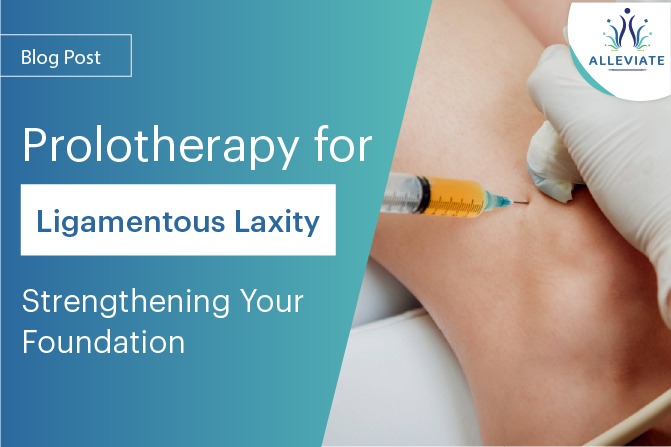Introduction
Ligamentous laxity, often referred to as loose ligaments, is a condition where the connective tissues that hold our joints together become overly flexible, leading to instability and a range of uncomfortable symptoms. From chronic pain to joint dislocations, ligamentous laxity can significantly impact an individual’s quality of life. Thankfully, prolotherapy emerges as a promising solution to address this issue, offering a way to tighten and strengthen weakened ligaments.
Understanding Ligamentous Laxity
Ligaments are like the ropes that hold our bones together, providing stability to our joints. However, ligamentous laxity occurs when these connective tissues become too loose, allowing excessive joint movement. This condition can manifest with symptoms like recurrent joint pain, subluxations (partial dislocations), and reduced joint function.
How Prolotherapy Works
Prolotherapy, also known as regenerative injection therapy, is a treatment designed to stimulate the body’s natural healing process. It involves injecting a solution, often containing dextrose (a type of sugar), into the affected area. This injection triggers a controlled inflammatory response, encouraging the body to repair and strengthen the weakened ligaments. Over time, this process leads to the formation of new collagen, which reinforces the ligaments and improves joint stability.
Prolotherapy Technique and Sessions
During a prolotherapy session, a healthcare professional will use a thin needle to inject the solution precisely into the targeted ligaments and tendons. The number of sessions can vary based on the severity of ligamentous laxity and the individual’s response to treatment. Generally, patients may require several sessions, spaced a few weeks apart, to achieve optimal results.
Clinical Results
Research has shown promising outcomes for prolotherapy in treating ligamentous laxity. A study published in the Journal of Alternative and Complementary Medicine reported that patients who received prolotherapy for knee laxity experienced significant improvements in pain reduction and joint stability. Another study in the Clinical Journal of Sport Medicine demonstrated that prolotherapy effectively decreased laxity and improved function in patients with ankle instability.
The Promise of Prolotherapy
Prolotherapy offers several advantages that make it an appealing solution for ligamentous laxity. Unlike surgical interventions, prolotherapy is minimally invasive, requires minimal downtime, and carries fewer risks. It addresses the root cause of the issue by promoting the body’s natural healing mechanisms, which can lead to long-lasting results.
By encouraging the production of collagen and stimulating tissue repair, prolotherapy provides a safe and effective way to tighten and strengthen lax ligaments. It not only alleviates pain and discomfort but also enhances joint stability, reducing the risk of further injuries and improving overall joint function.
Conclusion
Ligamentous laxity can be a challenging condition to manage, but prolotherapy offers a promising avenue for those seeking to regain stability and alleviate symptoms. With its natural and regenerative approach, prolotherapy empowers the body to heal itself, resulting in stronger ligaments and improved joint function. If you’re experiencing the discomfort of ligamentous laxity, consulting a healthcare professional about prolotherapy could be the first step toward a more stable and pain-free future.
If you are considering prolotherapy for ligamentous laxity do contact us at ALLEVIATE PAIN CLINIC, Bengaluru.
References
- Hauser R, et al. Prolotherapy for knee pain from ligamentous laxity: a case-controlled study. Journal of Alternative and Complementary Medicine. 2007;13(5): 475-482.
- Rabago D, et al. Hypertonic dextrose injections (prolotherapy) for knee osteoarthritis: results of a single-arm uncontrolled study with 1-year follow-up. Journal of Alternative and Complementary Medicine. 2012;18(4): 408-414.
- Rabago D, et al. Dextrose prolotherapy for knee osteoarthritis: a randomized controlled trial. Annals of Family Medicine. 2013;11(3): 229-237.
- Scarpone M, Rabago D, Snell E, et al. Effectiveness of platelet-rich plasma prolotherapy for lateral epicondylosis: a prospective pilot study. Clinical Journal of Sport Medicine. 2008;18(3): 248-254.





